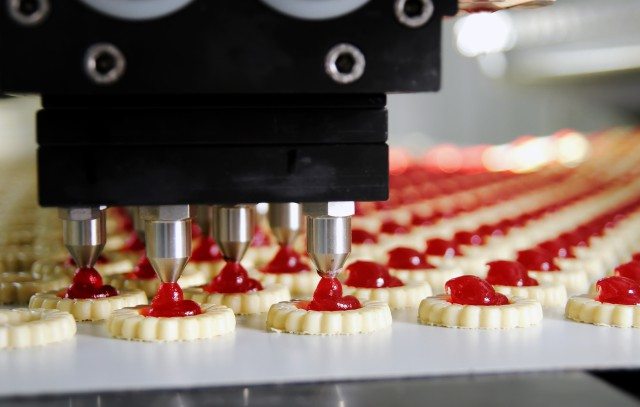Regardless of the efficiency of a food and beverage (F&B) factory, plant managers need to consider its ability to grow into the future that can take in more orders, produce reliably, prevent mishaps and scale.
Automation technologies and data analysis tools can help plant managers build future-proof facilities.
John Dart, senior industry consultant, consumer packaged goods, Rockwell Automation tells Food News International more.
FNI: What have F&B factories done to future proof themselves for the next five years?
Dart: Many food and beverage factories are installing and using enterprise manufacturing intelligence software to provide data-rich dashboards that provide ongoing information on production status as well as performance metrics.
With relevant, timely intelligence, F&B manufacturers are able to verify the correct quantity of materials for each product and both plan and react to issues such as variances in weight or count.
With real-time information, operators can direct their focus where it is most needed, and improve performance.
This increased visibility into operational performance is realized through the convergence of operations technology (OT) and information technology (IT), a key element in smart manufacturing.
FNI: Why are these important to their businesses?
Dart: By bringing together disparate networks and islands of automation, food and beverage plants can realize gains in efficiency, especially with difficult tasks like changeovers, and improve quality and consistency to meet demands of consumers, suppliers and regulators.
Additionally, the availability of information will allow manufacturers to track the source of raw materials, the conditions under which a product was created, and a finished products’ final destination.
FNI: What are the risks when one future-proof a F&B factory?
Dart: F&B companies are converging both IT and OT systems and using new technologies such as mobile, analytics, cloud and virtualization to manage their production lines and increase output.
This increased connectivity and information sharing, enabled by technologies such as smart devices, is significantly transforming companies and their operations.
More connected operations can create more potential entrance points for industrial security threats, which can come in many different forms – physical or digital, internal or external, malicious or unintentional – and companies must have measures in place to protect their infrastructure, products and people.
FNI: How can these risks be opportunities for growth and scaling up?
Dart: With a secure, robust network in place on the plant floor, an industrial enterprise has the opportunity to reap the advantages of manufacturing data to deliver relevant, performance-critical information to numerous stakeholders.
Users can access the information they need directly from an array of devices, for real-time decision making that can affect every point in the production process.
FNI: What are the characteristics of a future proof food factory? Why?
Dart: A future proof food factory will be connected and accessible, with systems in place to ensure scalability and ease of use.
Access to relevant and real-time information provides manufacturers the capacity for informed decision-making to enhance their processes.
With role-based, contextualized information available across the enterprise, manufacturers can focus on identifying opportunities and improving management capabilities.
Once a decision has been made to enhance control or work-flow processes, new technologies can also ensure its implementation.
With advances in equipment, control systems and information systems, manufacturers can refine a line with flexible and responsive solutions.
Manufacturing execution system solutions, for instance, help enforce work flow, and provide real-time inventory and financial reports for a plant or an entire enterprise.
FNI: What tools/factors are considered to be future proof? Why?
Dart: Enabling technologies that facilitate connectivity with other machines and enterprise systems offer important opportunities to manufacturers.
At every level of the organization, equipment is becoming smarter.
For instance, sensors in drives along with evolving alarm and events capabilities help to provide notifications about changes to operating parameters, notifying external systems as necessary.
Data can be gathered at every stage to ensure productivity, consistency and quality.
As these information needs increase, extreme demands are put on the network infrastructure.
To this end, a key strategy to simplification and future-proofing is employing an unmodified Ethernet-based architecture for all control and visualization devices as manufacturing modernizations take place.
This will reduce the cost and time to establish new scalable and accessible information systems, while making it easier to leverage mobile platforms and cloud-computing capabilities.
The focus on more highly integrated systems and coordinated data from a variety of sources is transforming food and beverage production.
FNI: How often should the management consider measures to future proof the food factory?
Dart: This will vary from company to company and depend on several factors such as the age and condition of current systems and equipment, ability and frequency of capital investment, characteristics of current workforce as well as plans for future expansion, acquisition or other business changes.
FNI: What would be your advice to F&B manufacturers on future proof a factory?
Dart: Manufacturers need to trust that the information coming from their equipment is reliable.
Multiple control and network solutions, however, require a manufacturer to customize how different systems communicate.
By integrating disciplines into one connected plant-wide infrastructure, efficiency and productivity is increased across multiple layers.
A high performance, integrated architecture can help access real-time data, enabling operators to monitor and improve machine and system performance.
Big data can only add value to an organization when available in a relevant, consumable format.
The key to receiving the right data is first considering what information is most relevant for the operation.
Then, determine what visibility will help make the decisions that satisfy product and regulatory needs.
Once the most relevant information has been identified, providing access to the right users is integral to getting value out of the information.
Mobile solutions provide real-time reporting anywhere on or off the plant floor, allowing operators the ability to customize their work flow to the device of their choosing, increasing flexibility for both the worker and the operation.










